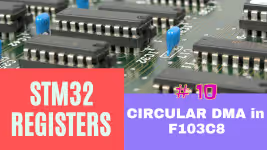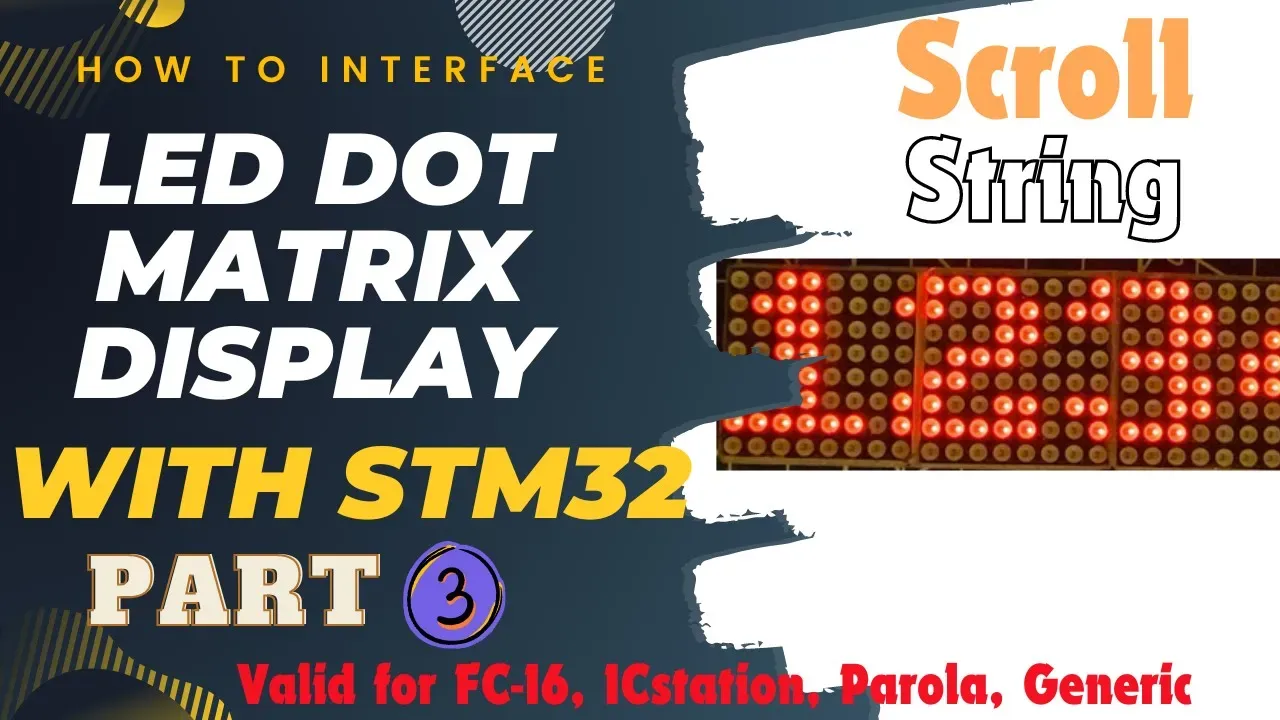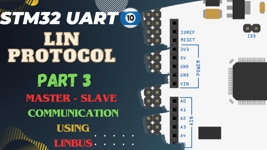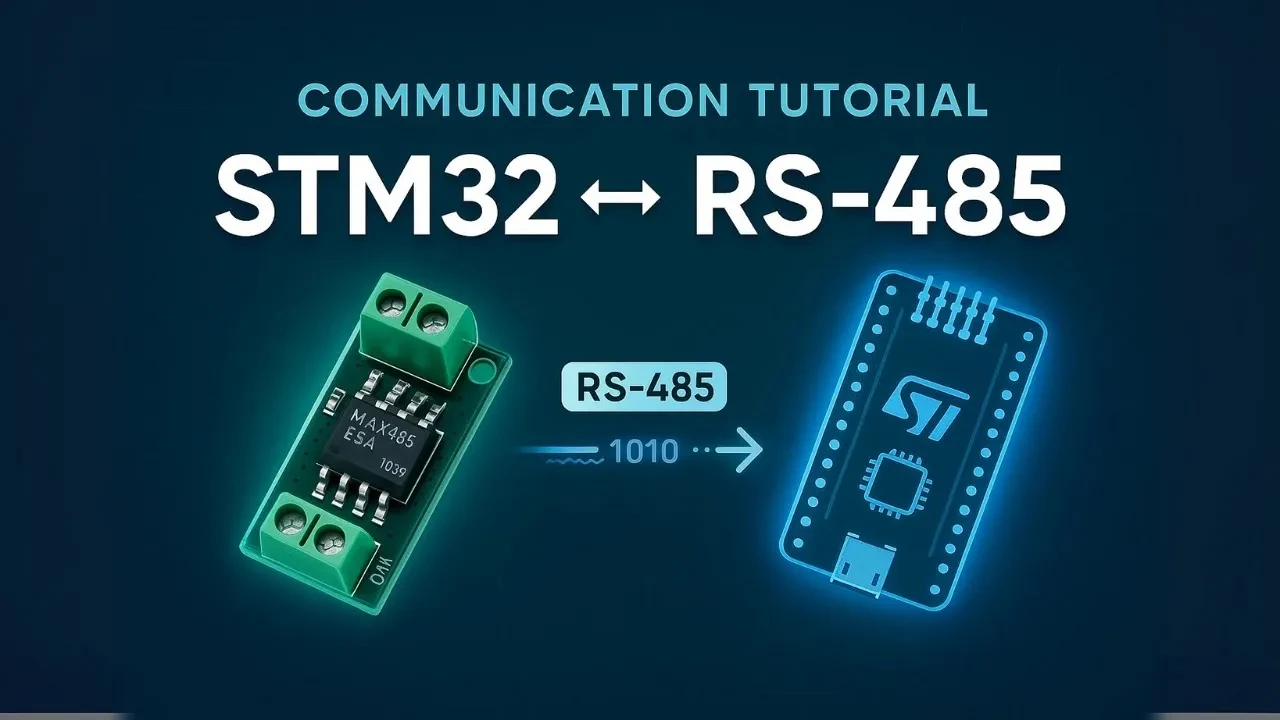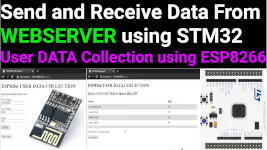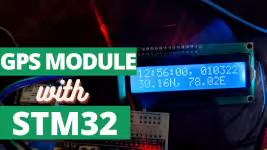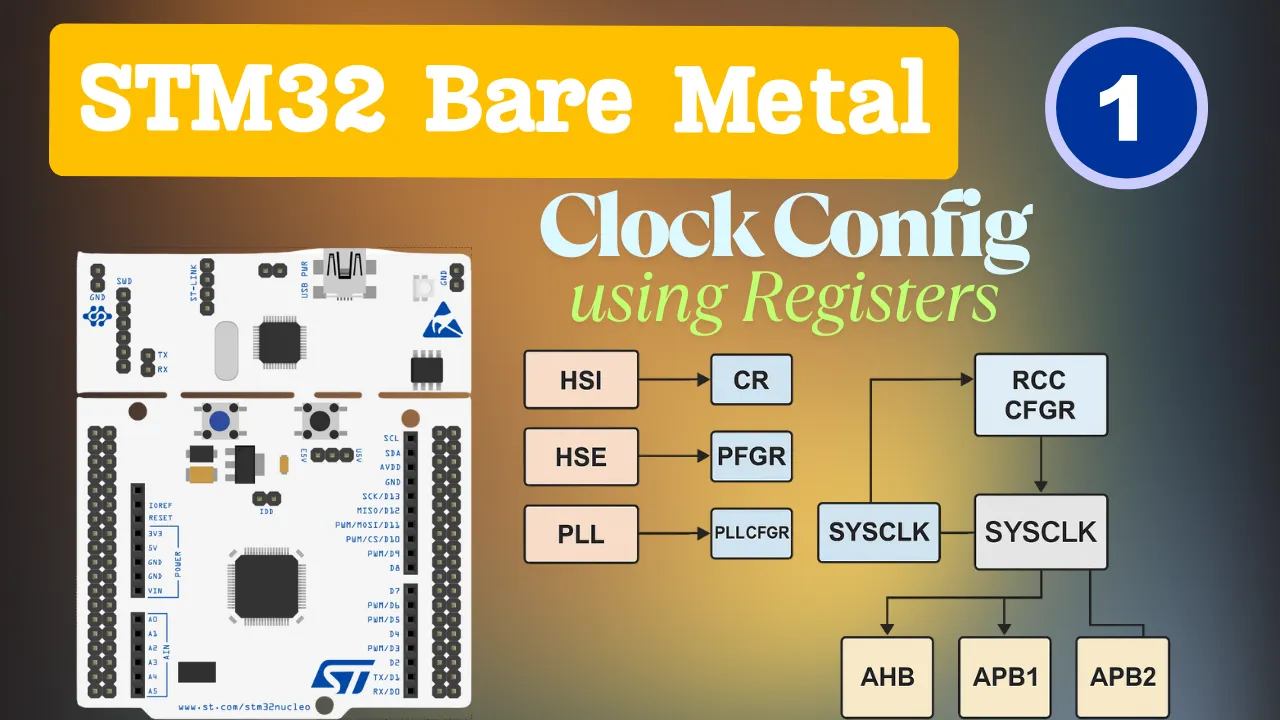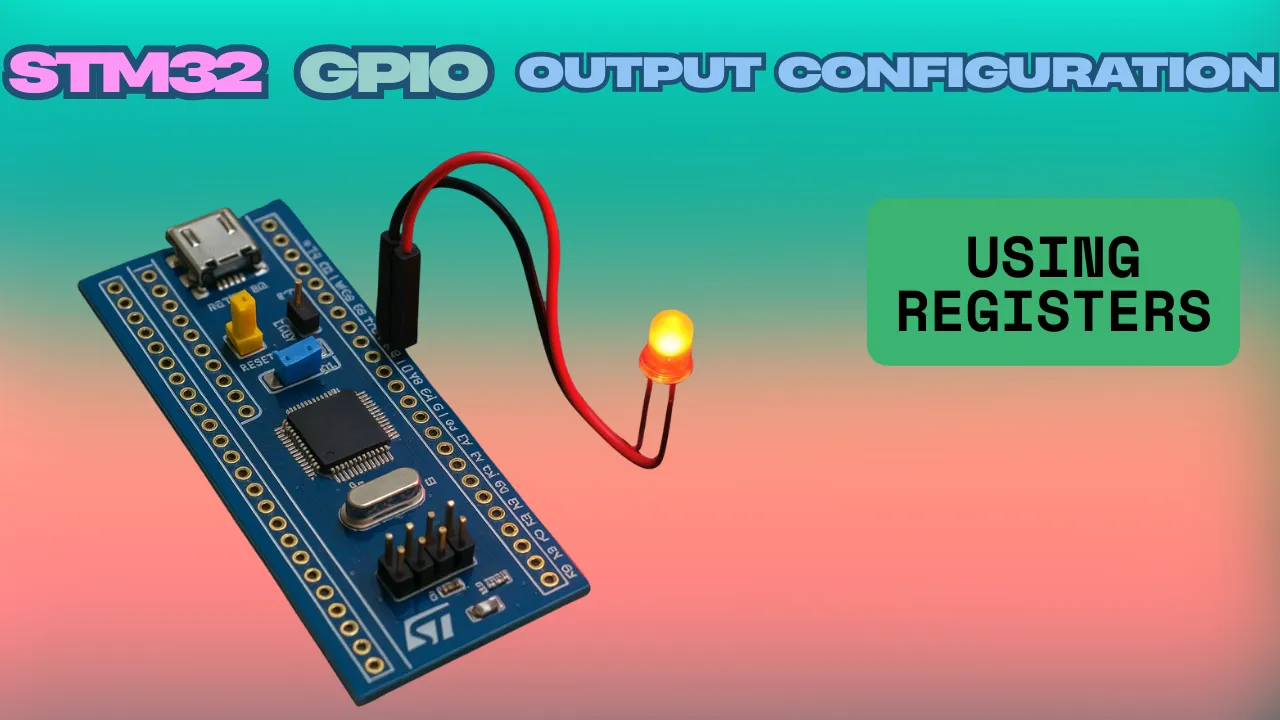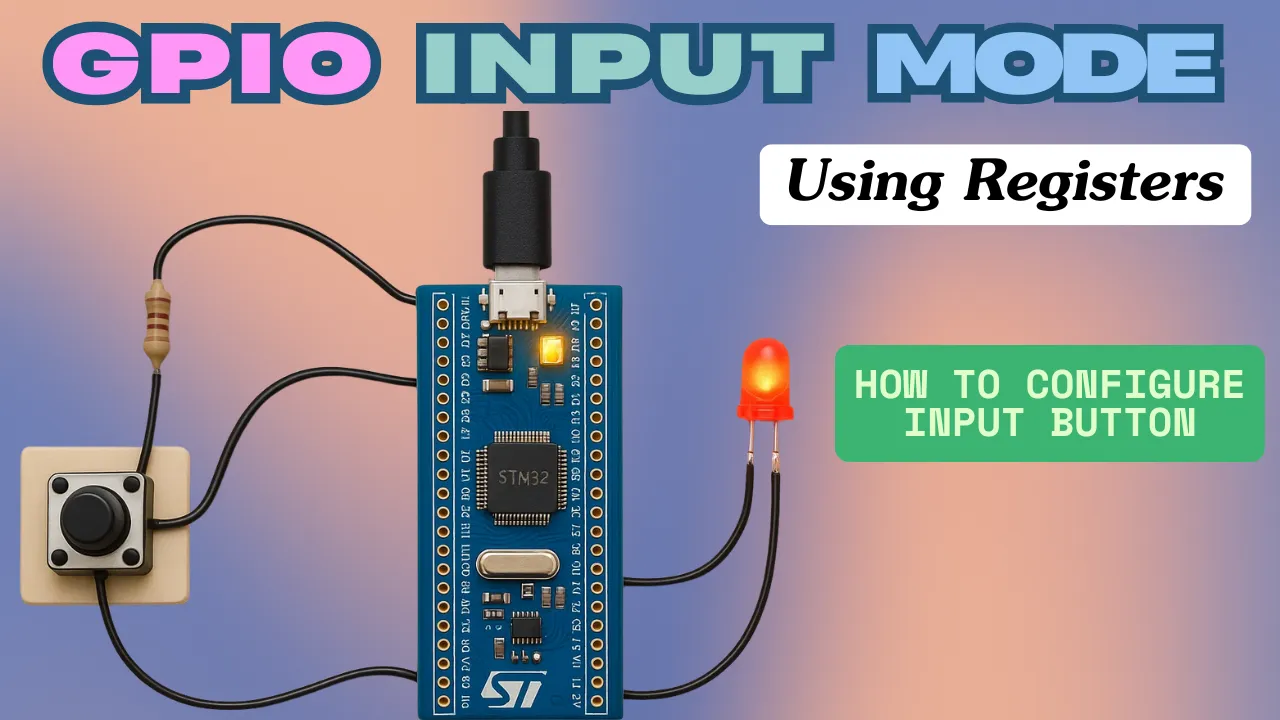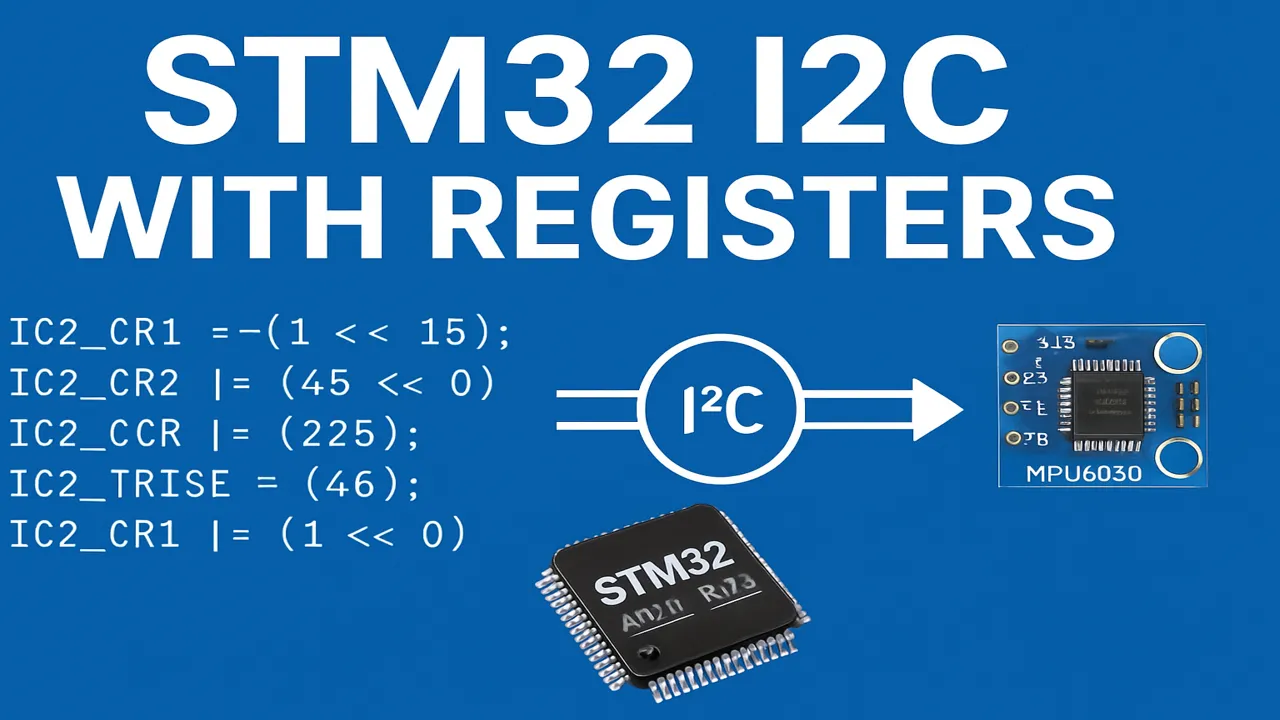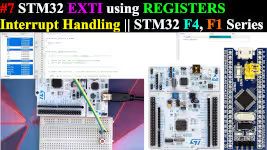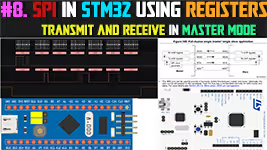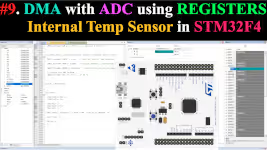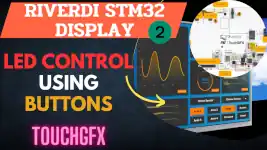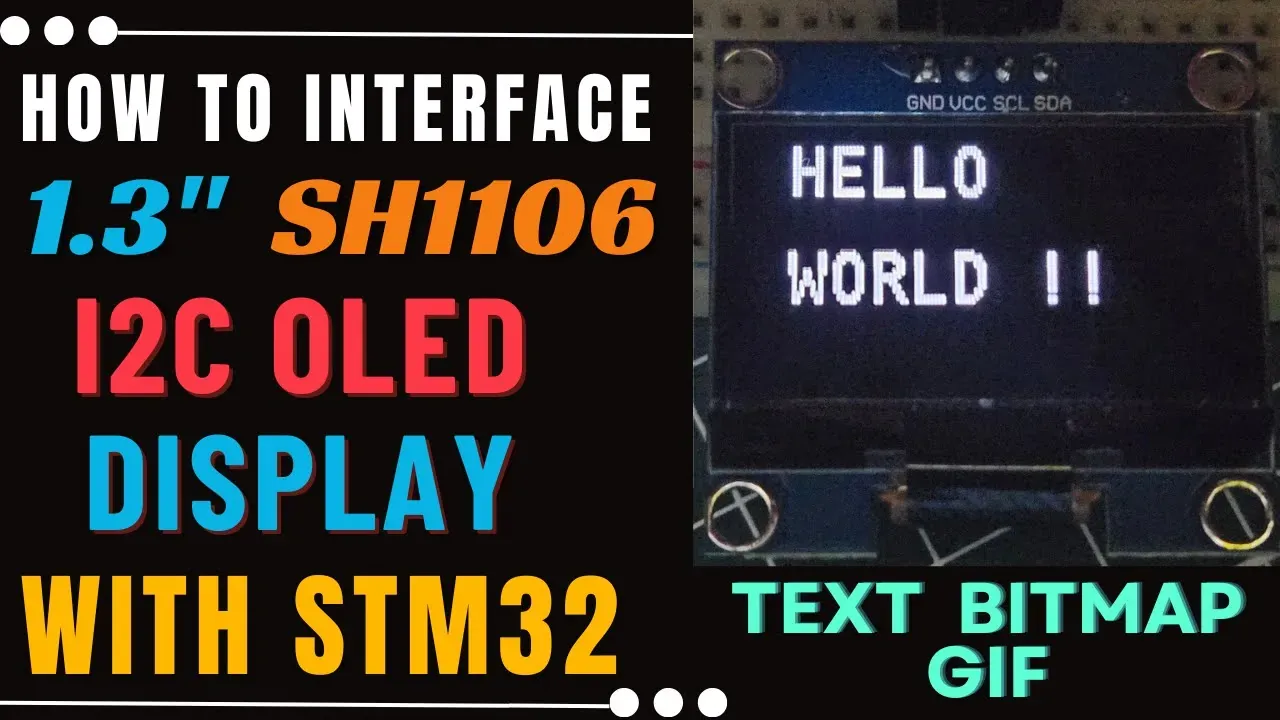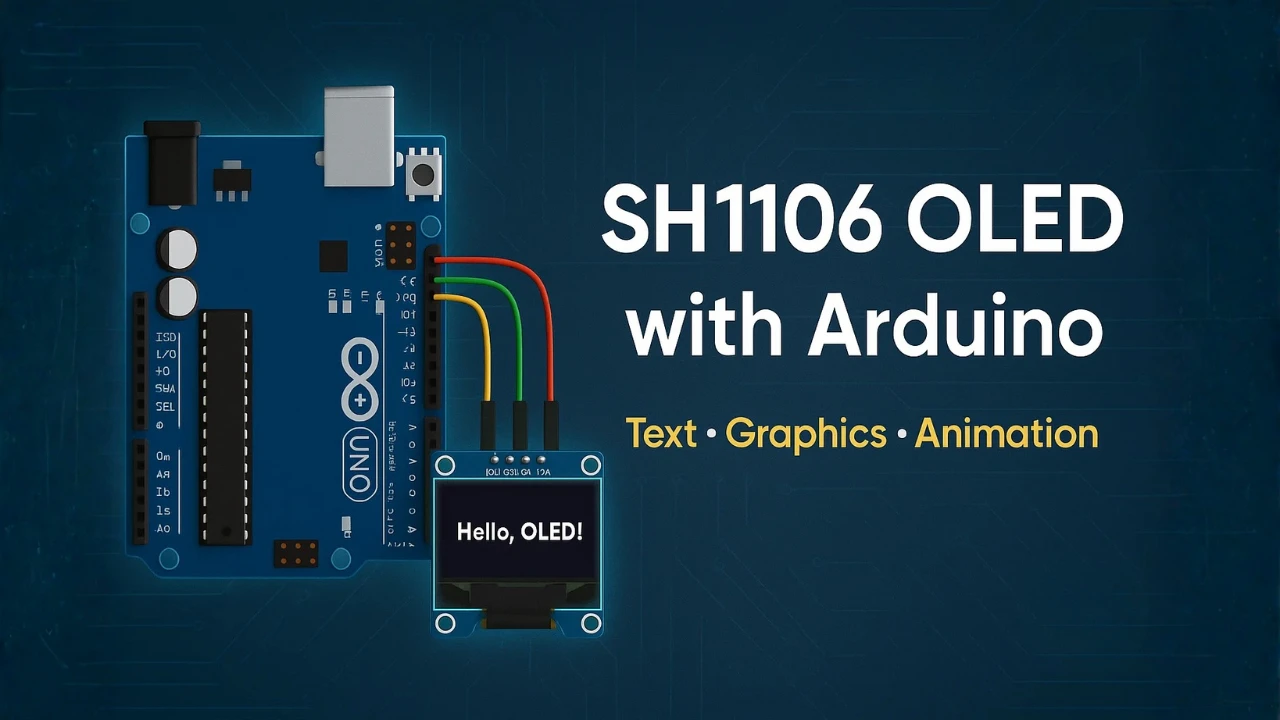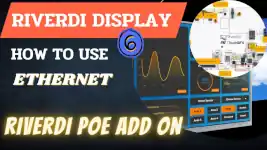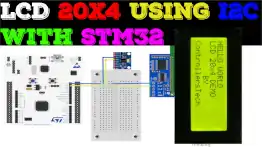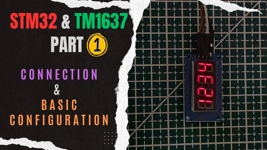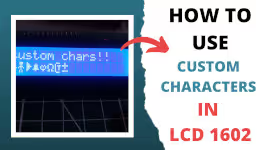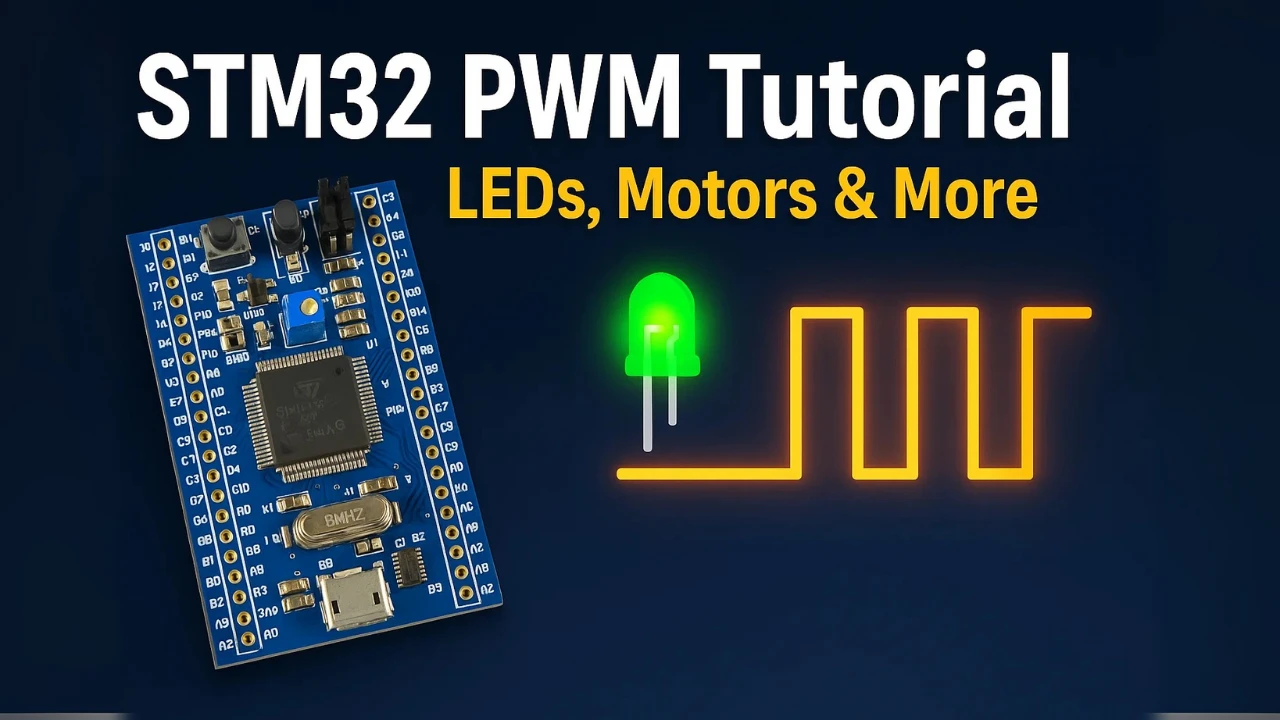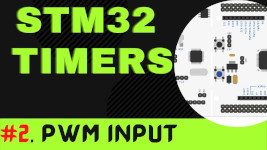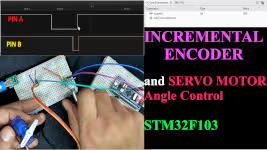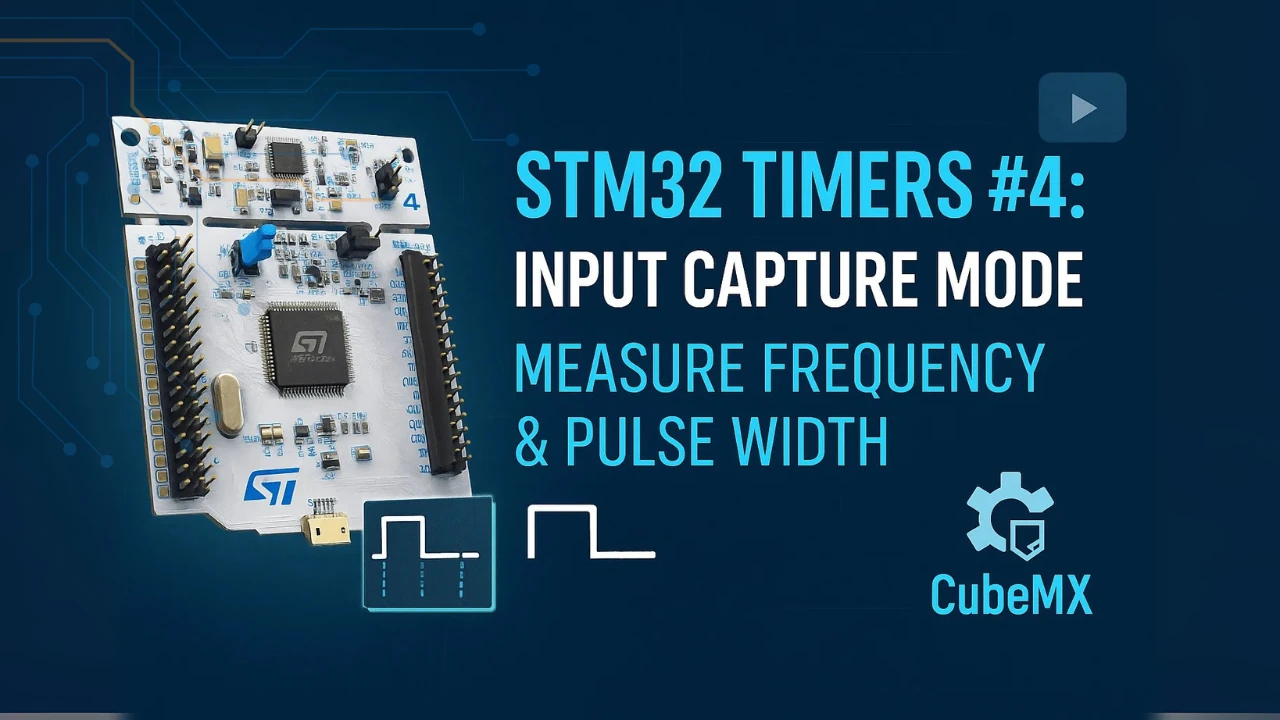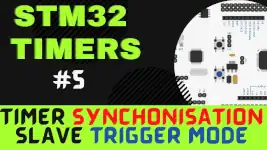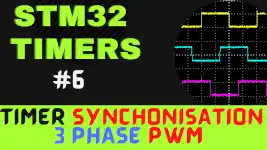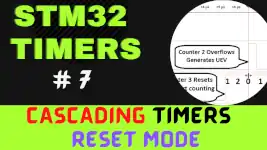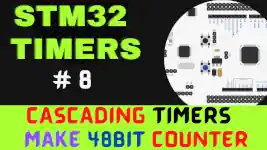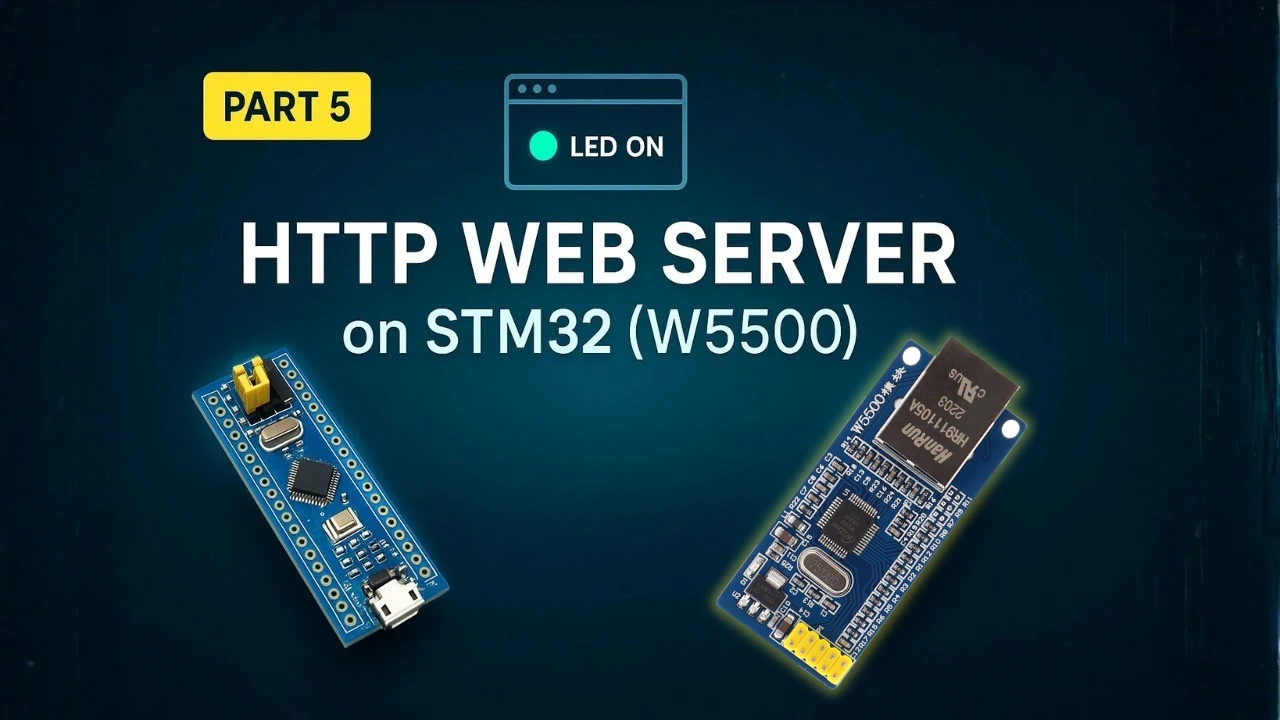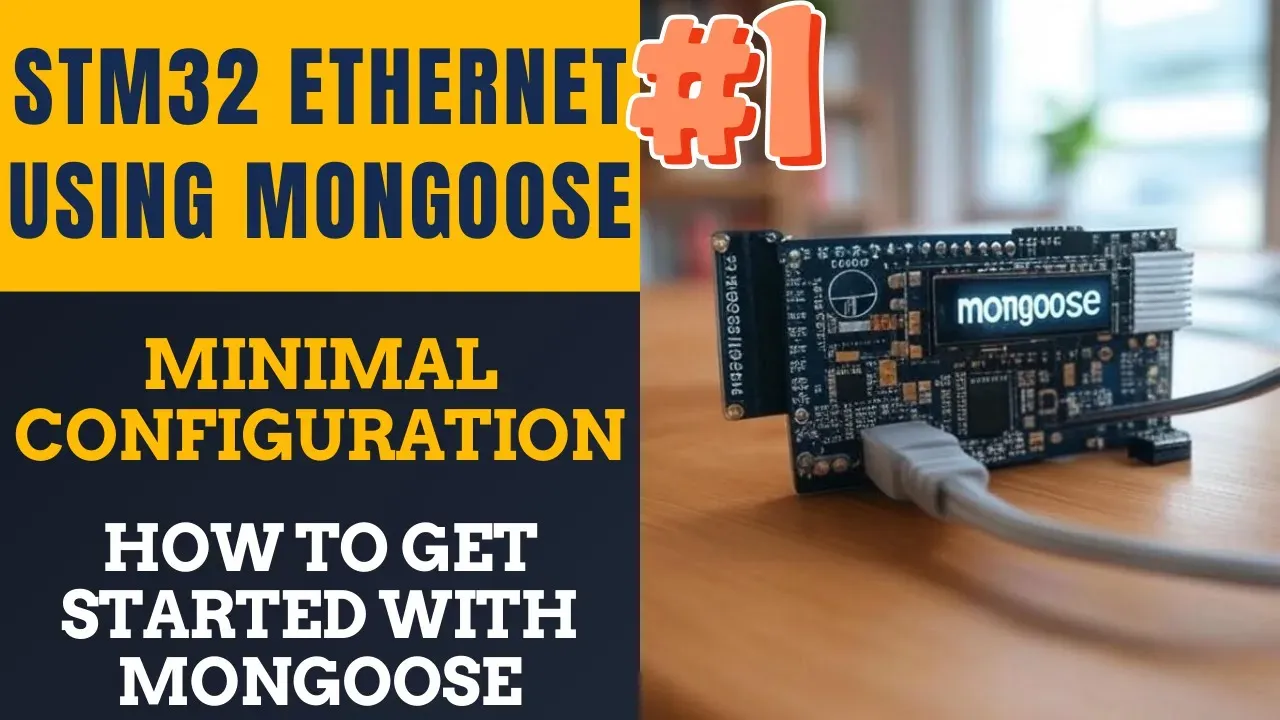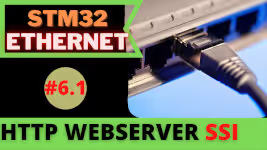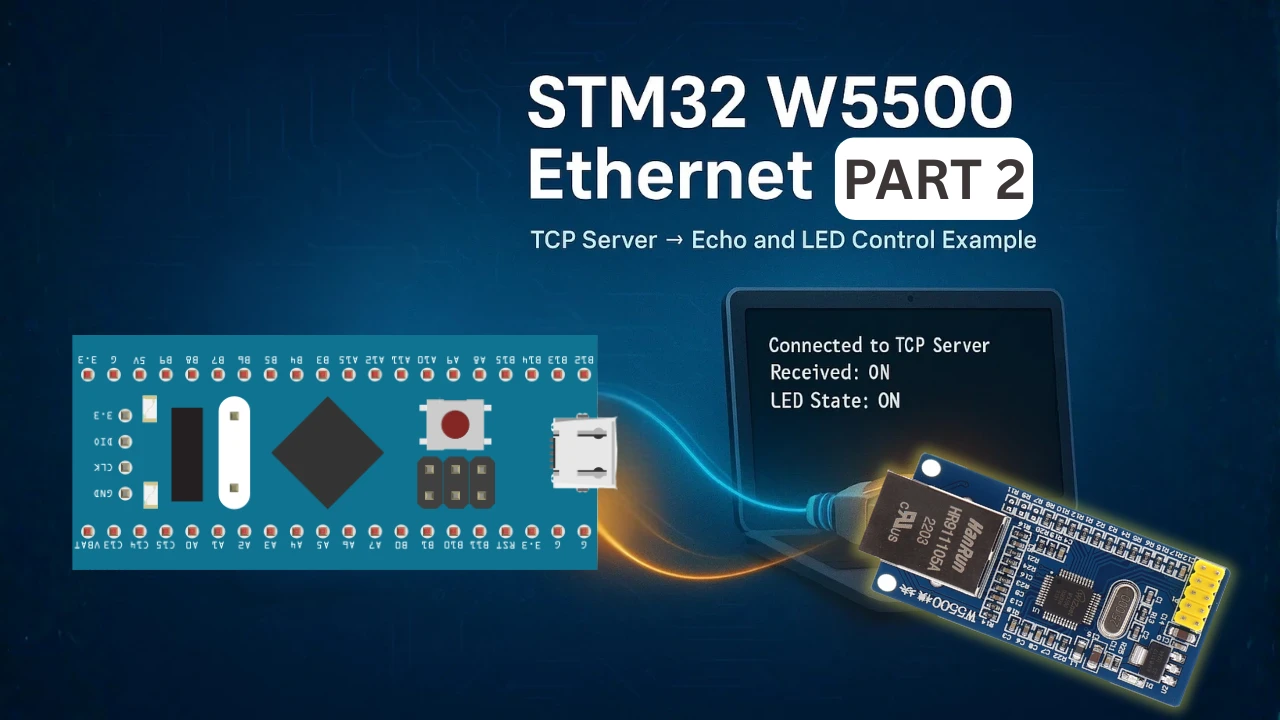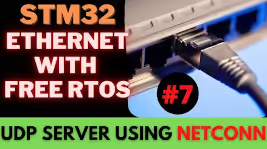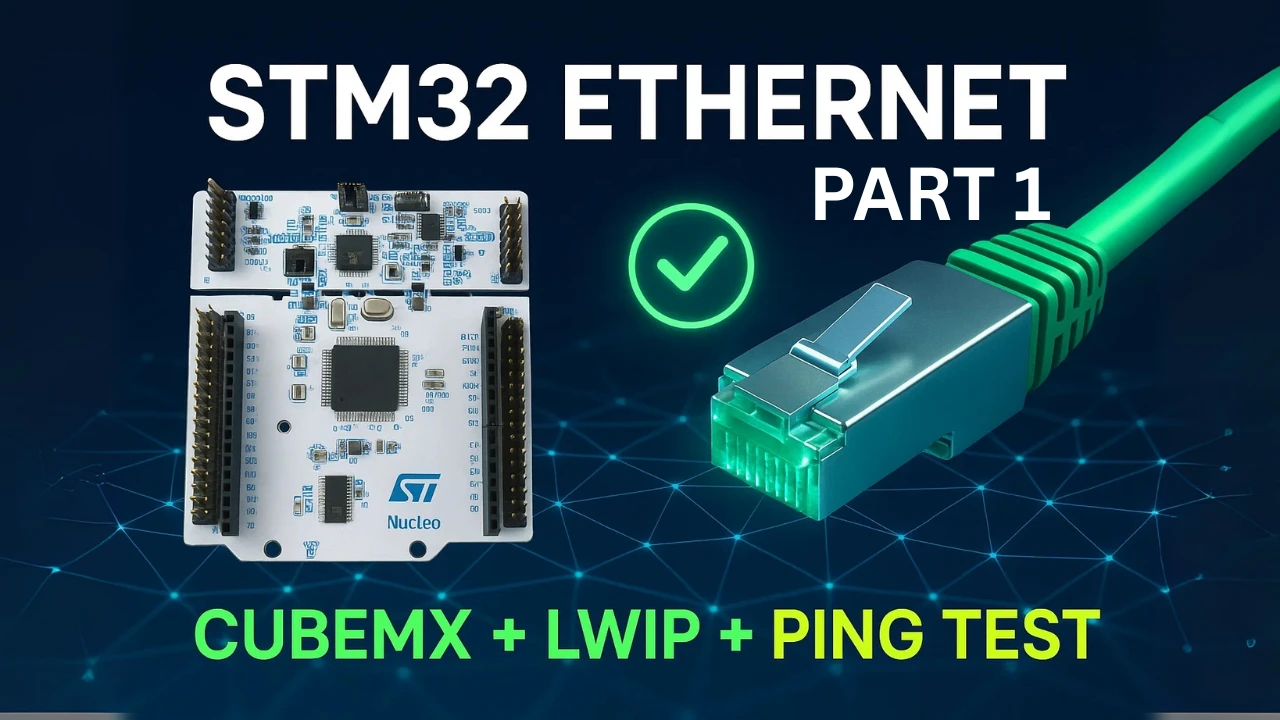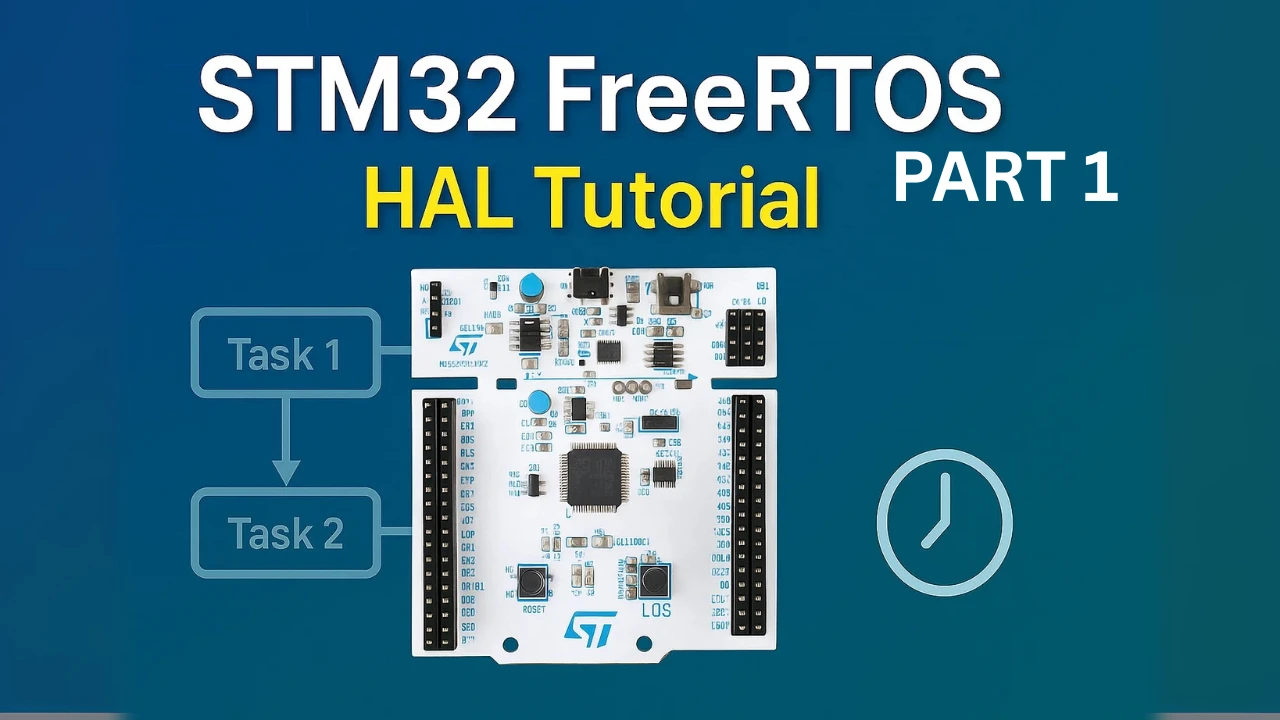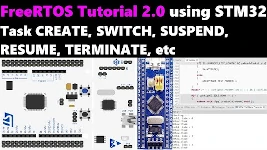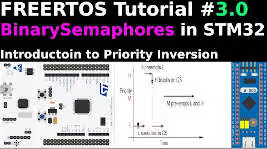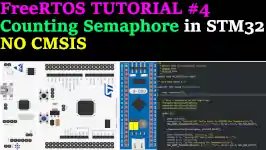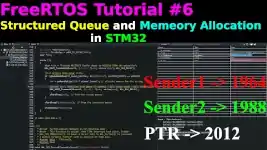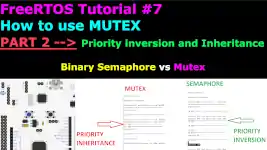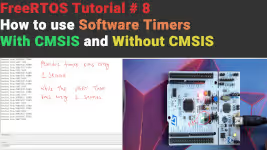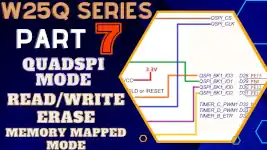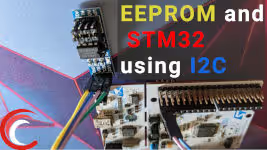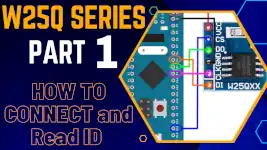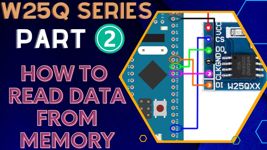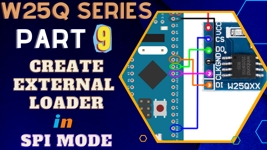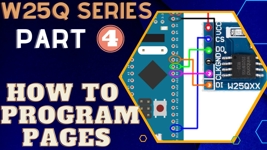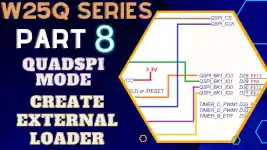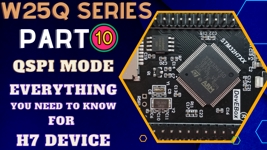STM32 Tutorials – Learn STM32 Programming with HAL, LL, and Bare Metal
This section provides step-by-step STM32 tutorials and tested code for learners ranging from beginners to experts. Programming is demonstrated in STM32CubeIDE using both HAL and LL drivers, making the examples easy to follow and adapt. The coverage spans GPIO, ADC, UART, timers, PWM, I2C, SPI, CAN, Ethernet, DMA, memories, displays, sensors, and many other peripherals—ideal for anyone looking to gain practical experience and develop reliable hardware projects.
STM32 Peripherals
Step-by-step STM32 guides using HAL covering essential peripherals like UART, SPI, I2C, ADC, DMA, CAN, and GPIO, with practical examples and code for beginners and advanced developers.
STM32 ADC PART 11 – Differential Mode Explained
STM32 ADC PART 6 – ADC Conversion Time Explained
How to Scroll Text on MAX7219 Dot‑Matrix with STM32 (SPI)
STM32 UART PART 10 – Lin Protocol PART 3
RS485 Communication with STM32 using MAX485 Module (UART Tutorial)
Send and Receive data from the WebServer using STM32
GPS (Neo 6M) with STM32
STM32 Programming using Registers
Learn STM32 register-level programming with clear explanations and examples, covering GPIO, timers, interrupts, communication interfaces, and more.
STM32 Clock Configuration with Registers – RCC Setup Example
STM32F103 Clock Setup using Registers
STM32 GPIO Output Example Using Registers | BSRR, MODER, GPIOA Explained
STM32 GPIO Input Configuration – Pin Setup, Pull-Up, and IDR Read
STM32 I2C Tutorial | Register-Based Configuration with Example Code
External Interrupt using Registers
STM32 SPI Tutorial Using Registers (Full-Duplex Master with ADXL345)
DMA with ADC using Registers in STM32
STM32 Display Tutorials
Explore STM32 display guides with step-by-step guides on interfacing LCD, OLED, and TFT screens, including graphics, text rendering, and practical examples.
Riverdi STM32 Display #2. LED Control using Buttons
Interface SH1106 1.3″ OLED with STM32 via I2C
Interface SH1106 I2C 1.3” OLED Display with Arduino – Full Guide with Bitmaps and Animations
Arduino SSD1306 OLED 0.96″ Display Guide – Show Text, Numbers & Custom Animations
Interfacing SSD1306 OLED Display (0.96”) with Arduino using I2C The SSD1306 OLED Display is one…
How to use Ethernet with Riverdi STM32 Displays
LCD 20X4 using I2C with STM32
Interface 7 segment display with STM32 || TM1637
Custom characters in LCD 1602 || STM32
STM32 Timer Series
Master STM32 timers with practical tutorials on PWM, input capture, output compare, interrupts, and advanced timer features for real projects.
STM32 Timer #1 : Generate PWM with DMA using HAL
STM32 TIMERS #2. How to Measure PWM Input
STM32 TIMERS #3. How to use the ENCODER Mode
STM32 Timer #4: Input Capture Tutorial | Measure Frequency & Pulse Width
STM32 TIMERS #5. Timer synchronization || Slave Trigger mode
STM32 TIMERS #6. Timer synchronization || Generate 3 Phase PWM
STM32 TIMERS #7. Timer synchronization || Slave Reset mode
STM32 TIMERS #8. Make 48 bit Counter by Cascading Timers
STM32 Ethernet Tutorials
Learn STM32 Ethernet programming with step-by-step guide on LAN configuration, TCP/IP, UDP, and real-world networking examples.
STM32 Ethernet PART 10 – HTTP Server (Basic) using LWIP NETCONN (RTOS)
STM32 W5500 Ethernet Tutorial (Part 5): HTTP Webserver on STM32
STM32 Ethernet with Mongoose | Part 1 Setup Guide
STM32 Ethernet PART 5 – How to Configure TCP Client
STM32 Ethernet PART 6.1 – Configure HTTP Webserver using SSI
STM32 W5500 Ethernet Tutorial (Part 2): Create a TCP Server to Receive and Process Data
STM32 Ethernet PART 7 – UDP Server using LWIP NETCONN (RTOS)
STM32 Ethernet Tutorial (PART 1): Hardware Setup, Configuration & LWIP Ping Test
STM32 RTOS Series
Step-by-step STM32 RTOS tutorial series covering FreeRTOS setup, tasks, queues, semaphores, and real-time project examples.
STM32 FreeRTOS Tutorial #1: Setup with CubeMX, Task Creation, and Priorities
FreeRTOS Tutorial #2 -> Task Operations
FreeRTOS Tutorial #3 -> How to use Binary Semaphore
FreeRTOS TUTORIAL #4 -> Using Counting Semaphore
FreeRTOS Tutorial #5 ->Using Queue
FreeRTOS Tutorial #7 -> Using MUTEX
FreeRTOS Tutorials #8 -> Software Timers
STM32 Memories
Understand STM32 memories with guides on Flash, SRAM, EEPROM, and external memory interfacing, explained with code examples.

